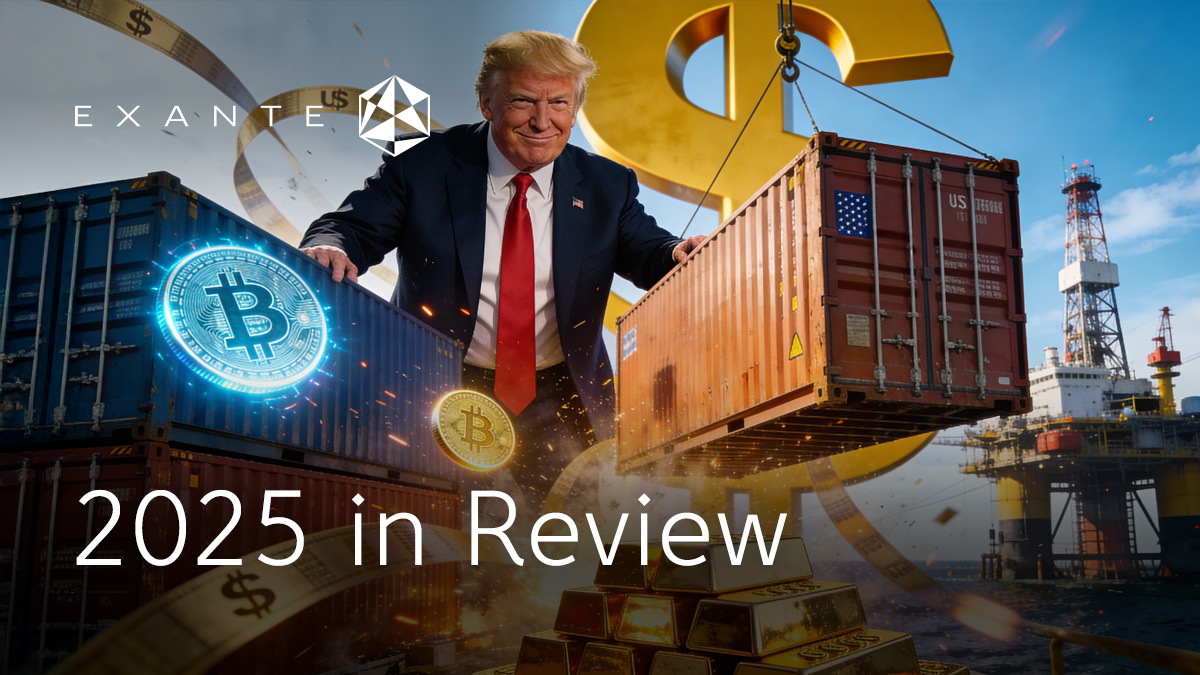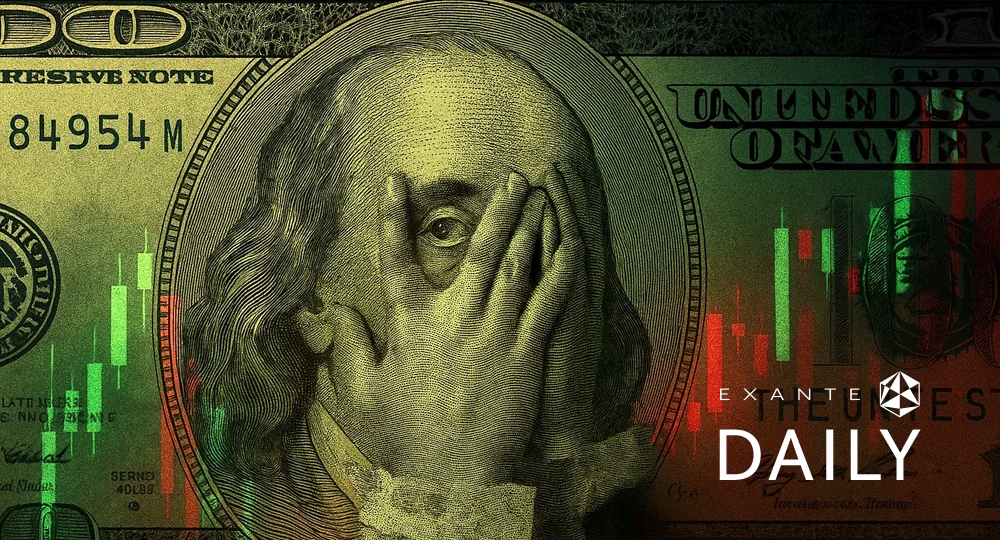
2023 Review and what's in store for 2024?

2023 started off with dire predictions about the US economy heading towards a slowdown with fears of recession lingering. Central banks struggled to fight inflation as wages continued to rise across the US, Europe and the UK.
Oil markets were less volatile than in 2022, with benchmark Brent averaging about $80 per barrel this year as a strong dollar and rising non-OPEC+ output outweighed OPEC+ cuts. Bond yields surged through to the end of October with Treasury yields pushed to 15-year highs as uncertainty about US debt sustainability, rising geopolitical risks in the Middle East along with increasing tensions between the US and China, NATO and Russia, and concerns about the 2024 election cycle in the US and Europe started to hit markets. Equities were led by the super 7 mega cap stocks with AI stocks leading the way for the S&P 500 to reach new highs in 2023. Although global economic growth slowed, the much feared recession in the US failed to materialise as the lingering fiscal stimulus impact spurred growth, with the US growing robustly in the third quarter of 2023 and core inflation continuing to fall.
What to think about in 2024
There are a number of new and continuing risks to investors in 2024 as the risk of recession is not off the cards for some. According to BNP Paribas, excess consumer savings are waning, and higher interest rates are having the inevitable effect on demand, both for goods and services, and particularly housing. BlackRock has noted that the situation has changed and that it is structural due to the changing nature of the workforce as a result of an ageing population.
There is some disagreement about the expected slowdown in the first part of 2024 and just how steep it may be. As noted by JPMorgan Asset Management, it is the “long and variable lags” in monetary policy that is often the problem for when consumer confidence turns, it turns quickly. Unlike many who are anticipating that soft landing, Allianz still believes that a US recession is on the cards while Fidelity expects a cyclical recession in 2024 due to rates staying too high for too long. Most forecasts are not as dire with Invesco believing that tight monetary policy, increasingly stretched consumers, and idiosyncratic growth shocks suggest global growth will continue to slow in 2024. This may be because the financial conditions dragging on growth will likely diminish. However, Goldman Sachs sees only a very limited recession risk despite several tailwinds to global growth and thinks that, despite the central banks perhaps being too slow to act in 2022 and 2023, willing to deliver cuts if growth slows.
What appears to be unanimous is that inflation is expected to continue to fall throughout 2024 although it will be bumpy. Although the supply-demand balance in the goods sector is now largely complete, the impact on core goods disinflation is, as noted by Goldman Sachs, still unfolding and will likely continue through most of 2024. The US dollar will likely fall through 2024 and boost non-US dollar assets although geopolitical events may lead to it rising again if investors seek out a safe haven.
However, although inflation may slow, wage growth will likely keep core inflation higher than before the pandemic. By how much the central banks will pivot in 2024 is still being debated as much will depend upon the rate of demand driven inflation. Risk appetite should start to improve, but uncertainty around the timing of when rate cuts begin could result in volatility until the guidance from central banks changes.
In addition to the macroeconomic uncertainties there are a number of potential risks for 2024 that should be considered including:
Energy: Despite the falling price of gas and the redirection of energy supplies from Russia, the problem of energy insecurity in Europe remains as the conflict in Ukraine continues. It has been exacerbated by the attack on Israel and the threat of a widening conflict, although much reduced from October’s highs, remains. There may also be further tensions in global energy markets in 2024 as the EU green energy policy comes into effect and cuts by OPEC+ are expected to continue.
Economic dissonance: This will be reflected in divergent central bank policies, with the Bank of England being slower to cut rates than its US or European counterparts. There is also the potential hit to bond markets as the US debt ceiling issue will come back to haunt it in January and February along with the political cycle. Questions around debt sustainability and appropriate debt levels will plague not just the US though, but include other developed markets.
Geopolitical relations and geo fragmentation: As we have previously noted in our reports, What’s driving global trade? The impact of geopolitics, technology and climate on markets and Renewables and the New Commodity Superpowers, countries are changing their regional links, changing domestic priorities (often tied to industrial policies) and rethinking their participation in economic blocs for sensitive and strategically important sectors. This means that production costs are rising across developed markets as countries' trade relationships change with re-shoring and friend-shoring potentially pushing up inflation. And 2024 is set be the biggest election year in history, with more than half the world population voting. The US, European Parliament, Taiwan, and Indian elections have the potential to really shift the geopolitical landscape.
The low-carbon transition: Even though the COP28 agreement was seen by some as a cop-out, a commitment to the reduction in fossil fuels demonstrates that there will be more interest in the development of alternative fuels and climate resilient infrastructure by investors and governments. This should be supportive to technology as well as the materials sector.
So what does this all mean for investors?
It is clear that the bond market is changing. With yields expected to continue to tumble, many investors will likely look to extend duration now. Equities markets are also expected to benefit from any central bank rate reduction with additional sectors seeing growth if the US does indeed achieves that much hoped for soft landing. Although the huge interest in AI will remain, it may definitely be time for investors to look beyond the seven mega caps and broaden their exposure. Another area of interest will continue to be Emerging Markets (EMs) which, despite a still high US dollar, offer a range of opportunities in both equities and in bonds. The focus there should be on countries with positive cyclical momentum and good structural growth stories.
DISCLAIMER: This article is provided to you for informational purposes only and should not be regarded as an offer or solicitation of an offer to buy or sell any investments or related services that may be referenced here.
While every effort has been made to verify the accuracy of this information, EXT Ltd. (hereafter known as “EXANTE”) cannot accept any responsibility or liability for reliance by any person on this publication or any of the information, opinions, or conclusions contained in this publication. The findings and views expressed in this publication do not necessarily reflect the views of EXANTE. Any action taken upon the information contained in this publication is strictly at your own risk. EXANTE will not be liable for any loss or damage in connection with this publication.
This article is provided to you for informational purposes only and should not be regarded as an offer or solicitation of an offer to buy or sell any investments or related services that may be referenced here. Trading financial instruments involves significant risk of loss and may not be suitable for all investors. Past performance is not a reliable indicator of future performance.




